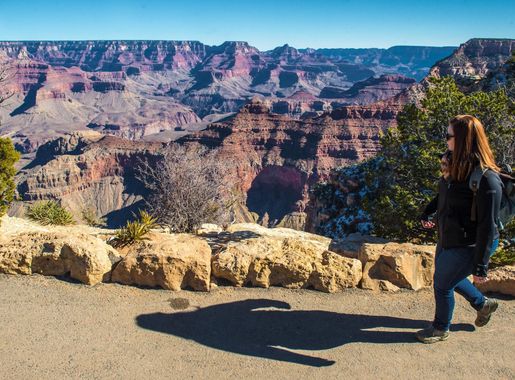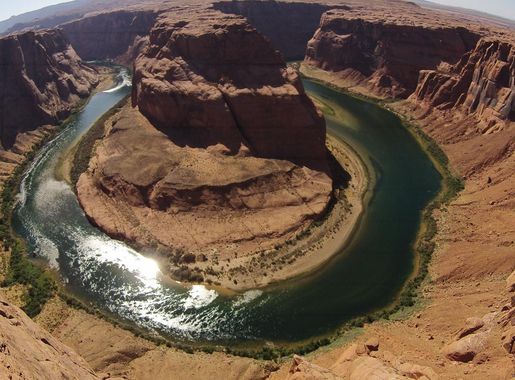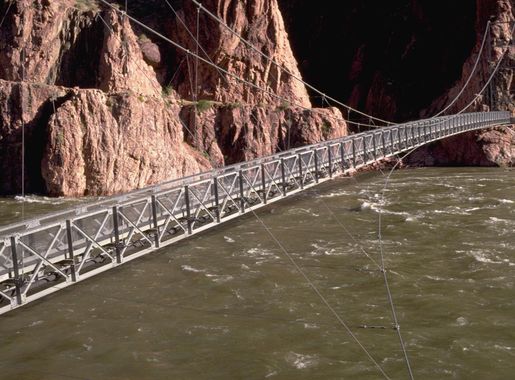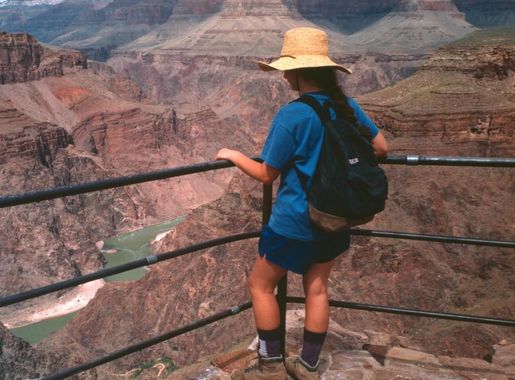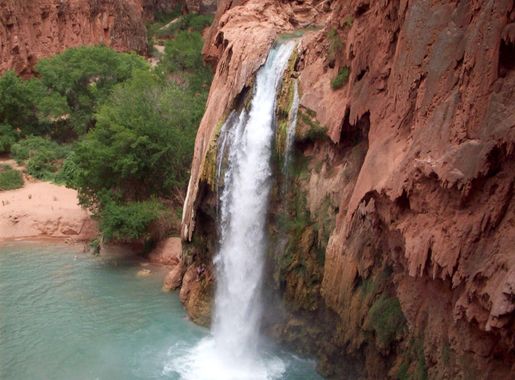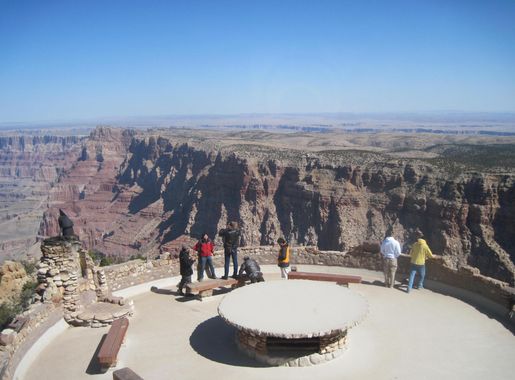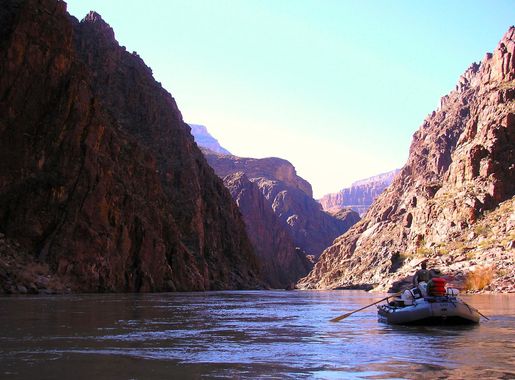
The Majestic Grand Canyon
Explore the breathtaking vistas and geological wonders of the Grand Canyon National Park in Arizona, a must-visit destination for nature lovers and adventure seekers.
The Grand Canyon National Park in Arizona is one of the most awe-inspiring natural wonders on earth. Carved by the Colorado River, this immense canyon stretches over 277 miles in length, up to 18 miles in width, and a mile deep. The layers of colorful rock reveal millions of years of geological history, making it a paradise for both nature lovers and geology enthusiasts. Visitors can explore the park through various means. Hiking trails abound, with options ranging from easy walks along the rim to strenuous descents into the canyon. For those who prefer a more relaxed experience, there are guided tours and shuttle buses that offer informative and scenic routes. The South Rim is the most popular area, offering stunning panoramic views and ample visitor facilities. The North Rim, though less crowded, provides a more secluded and tranquil experience. Beyond the breathtaking vistas, the Grand Canyon is home to a diverse range of wildlife and plant species. The park also offers opportunities for white-water rafting, camping, and even mule rides. Whether you're an adventurer, a photographer, or simply someone who appreciates natural beauty, the Grand Canyon is a destination that promises an unforgettable experience.
Local tips in Grand Canyon National Park
- Visit during the early morning or late afternoon to avoid crowds and capture the best light for photography.
- If you plan to hike, be sure to carry plenty of water and wear appropriate footwear.
- Check the weather forecast and be prepared for sudden changes in temperature.
- Consider visiting the North Rim for a quieter, less crowded experience.
- Take advantage of the free shuttle buses to easily navigate between popular viewpoints and trailheads.
The Majestic Grand Canyon
The Grand Canyon National Park in Arizona is one of the most awe-inspiring natural wonders on earth. Carved by the Colorado River, this immense canyon stretches over 277 miles in length, up to 18 miles in width, and a mile deep. The layers of colorful rock reveal millions of years of geological history, making it a paradise for both nature lovers and geology enthusiasts. Visitors can explore the park through various means. Hiking trails abound, with options ranging from easy walks along the rim to strenuous descents into the canyon. For those who prefer a more relaxed experience, there are guided tours and shuttle buses that offer informative and scenic routes. The South Rim is the most popular area, offering stunning panoramic views and ample visitor facilities. The North Rim, though less crowded, provides a more secluded and tranquil experience. Beyond the breathtaking vistas, the Grand Canyon is home to a diverse range of wildlife and plant species. The park also offers opportunities for white-water rafting, camping, and even mule rides. Whether you're an adventurer, a photographer, or simply someone who appreciates natural beauty, the Grand Canyon is a destination that promises an unforgettable experience.
When is the best time to go to Grand Canyon National Park?
Iconic landmarks you can’t miss
Grand Canyon Visitor Center
Discover the Grand Canyon Visitor Center: Your gateway to breathtaking views, informative exhibits, and unforgettable hiking adventures in Arizona's iconic landscape.
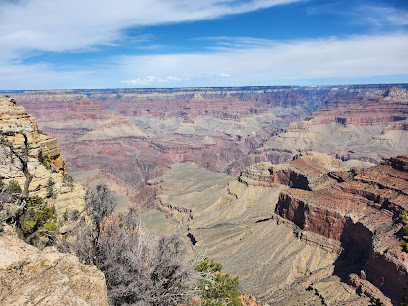
Grand Canyon West Skywalk
Discover the breathtaking Grand Canyon West Skywalk, a glass bridge that offers stunning views and thrilling experiences above the majestic canyon.
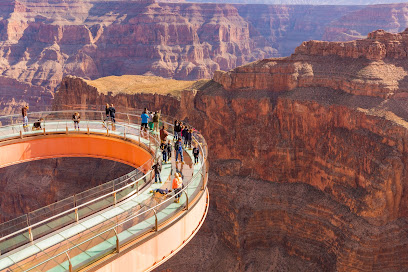
Grand Canyon West
Experience the breathtaking beauty and thrilling adventures at Grand Canyon West, a premier destination for nature lovers and adventure seekers.
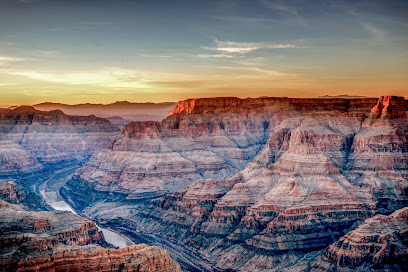
Desert View Watchtower
Discover breathtaking views and rich history at the Desert View Watchtower, a must-see landmark within Grand Canyon National Park.
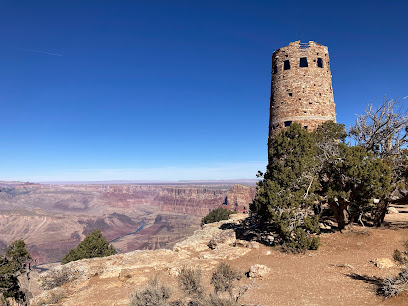
Mather Point
Discover the breathtaking vistas of Mather Point, a must-visit overlook at the Grand Canyon National Park, ideal for all nature lovers and adventure seekers.
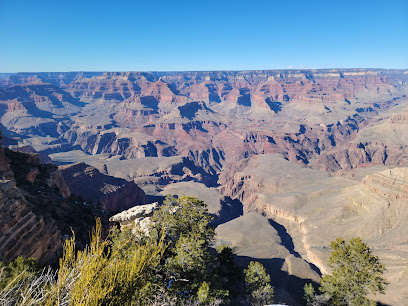
Grandview Point
Experience breathtaking vistas at Grandview Point, one of the most stunning overlooks in the Grand Canyon National Park.
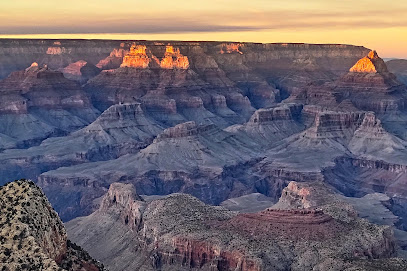
Grand Canyon
Experience the breathtaking beauty of the Grand Canyon, a UNESCO World Heritage site known for its stunning vistas and rich geological history.
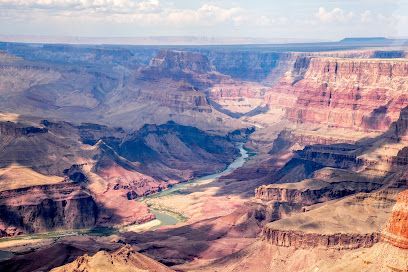
Hopi Point
Experience the awe-inspiring views of Hopi Point at the Grand Canyon, a must-see destination for nature lovers and photographers.
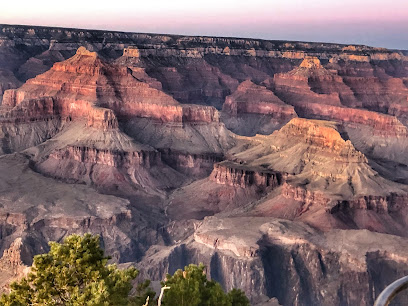
Grand Canyon Visitor Center IMAX
Discover the wonders of the Grand Canyon at the Visitor Center IMAX, where breathtaking films and informative exhibits await your exploration.

Navajo Point
Experience the breathtaking vistas of Navajo Point at the Grand Canyon, where stunning landscapes and rich cultural significance await every visitor.
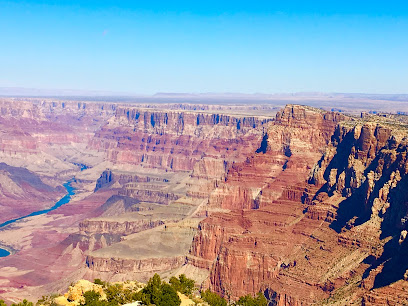
Grand Canyon Caverns
Explore the breathtaking underground beauty of Grand Canyon Caverns in Arizona – a geological wonder that captivates and educates visitors of all ages.
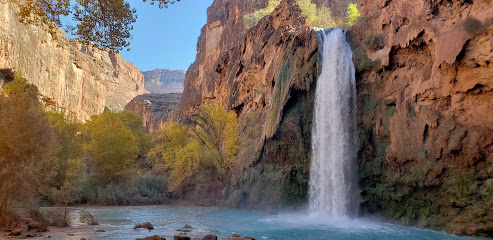
Pipe Creek Vista
Discover the awe-inspiring views at Pipe Creek Vista in Grand Canyon National Park, a must-visit for every traveler seeking breathtaking natural beauty.
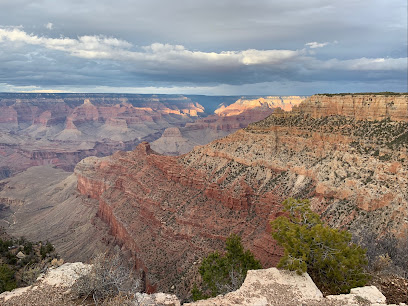
Mohave Point
Experience the breathtaking views of the Grand Canyon at Mohave Point, a must-visit vista point along Hermit Road, perfect for nature lovers and photographers.
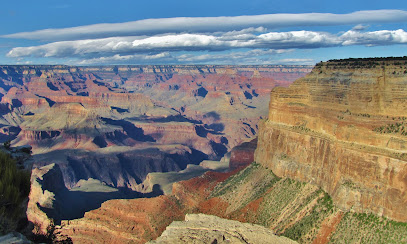
South Rim Trail
Discover the breathtaking beauty of the South Rim Trail in the Grand Canyon, an unforgettable hiking experience surrounded by stunning landscapes.
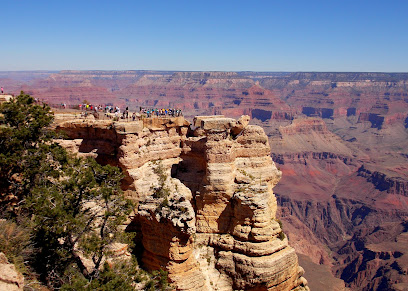
Yaki Point
Experience the breathtaking beauty of Yaki Point, a premier vista point in the Grand Canyon, perfect for unforgettable views and photography.
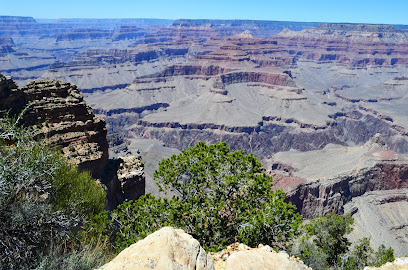
Unmissable attractions to see
Grand Canyon West Skywalk
Discover breathtaking views and cultural experiences at the Grand Canyon West Skywalk, a stunning glass bridge over one of nature's most magnificent wonders.
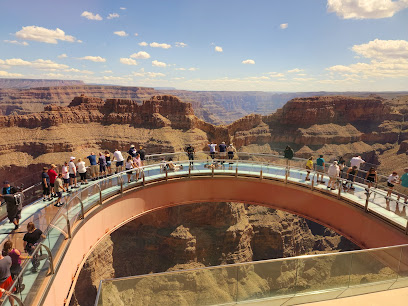
Grand Canyon West
Discover the awe-inspiring Grand Canyon West, where breathtaking views, thrilling outdoor activities, and rich Native American culture await every traveler.
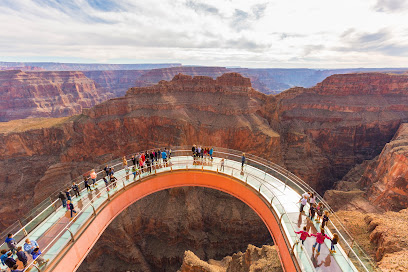
Bearizona Wildlife Park
Experience the thrill of North American wildlife at Bearizona Wildlife Park, a family-friendly destination for animal lovers in Williams, Arizona.
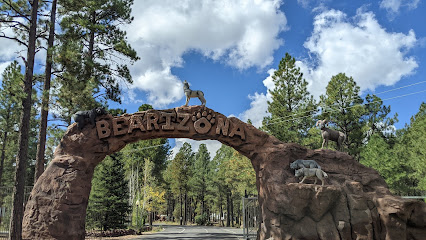
Ken's Tours Lower Antelope Canyon
Discover the breathtaking beauty of Lower Antelope Canyon with Ken's Tours, an unforgettable adventure in Arizona's stunning desert landscape.
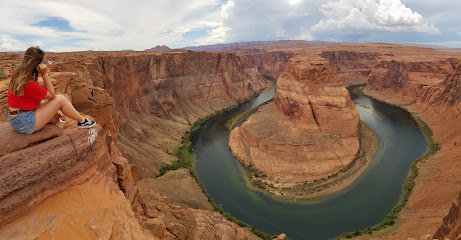
Petrified Forest National Park
Discover the vibrant landscapes and ancient wonders of Petrified Forest National Park, a unique geological treasure in Arizona.

Montezuma Castle National Monument
Visit Montezuma Castle National Monument in Arizona to explore ancient cliff dwellings and rich Native American history amidst stunning desert landscapes.
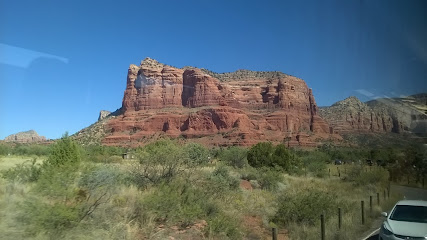
Kaibab National Forest
Discover the breathtaking beauty of Kaibab National Forest near the Grand Canyon, perfect for hiking, camping, and wildlife watching.
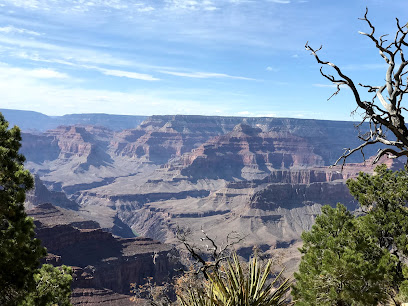
Glen Canyon National Recreation Area
Explore the breathtaking beauty of Glen Canyon National Recreation Area, where stunning landscapes and outdoor adventures await in Utah's natural paradise.
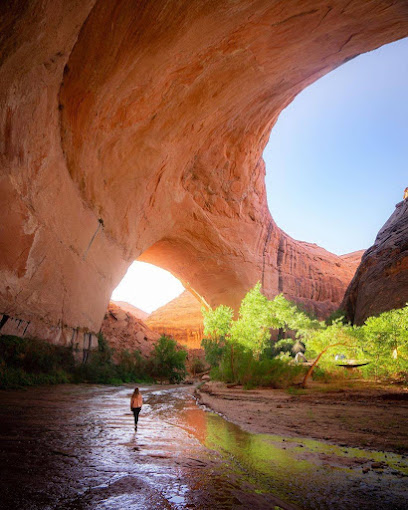
Walnut Canyon National Monument
Explore the stunning Walnut Canyon National Monument, home to ancient cliff dwellings and breathtaking hiking trails in the heart of Arizona.
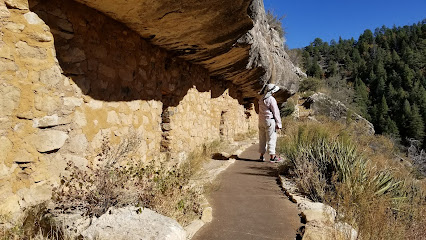
Glen Canyon Dam Overlook
Explore the breathtaking views at Glen Canyon Dam Overlook, a scenic vista point showcasing the stunning beauty of Arizona's landscape.
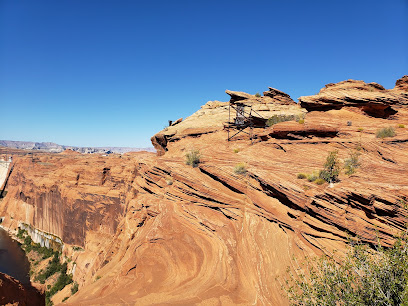
Hopi Point
Discover the breathtaking beauty of Hopi Point, a premier scenic spot on the Grand Canyon's South Rim, perfect for photography and nature appreciation.
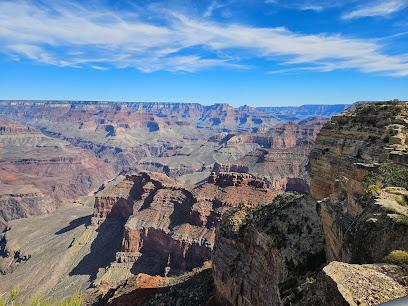
Canyon de Chelly National Monument
Discover the artistic landscapes and rich Native American culture at Canyon de Chelly National Monument in Arizona, a true natural marvel.
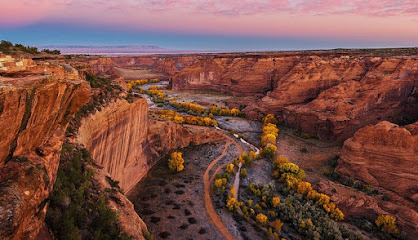
Mohave Point
Experience the breathtaking panoramic views of the Grand Canyon at Mohave Point, a must-visit destination for nature lovers and photographers alike.

South Rim Trail
Discover the breathtaking views and rich geological history along the iconic South Rim Trail in the Grand Canyon, a must-visit for every traveler.
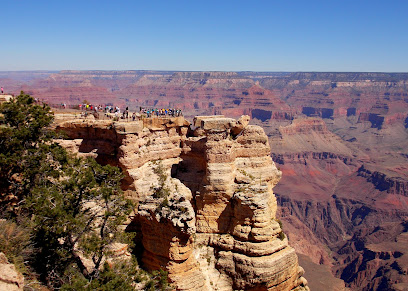
Yaki Point
Experience unparalleled views at Yaki Point in the Grand Canyon, where nature's beauty unfolds in breathtaking panoramas.
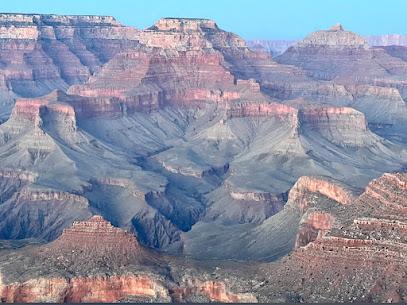
Essential places to dine
Plaza Bonita Restaurant
Experience vibrant Mexican cuisine at Plaza Bonita Restaurant in Grand Canyon Village – a culinary delight amidst breathtaking landscapes.
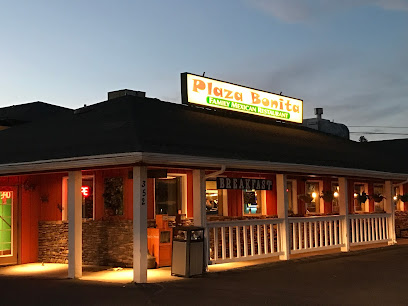
We Cook Pizza and Pasta
Experience delicious pizza and authentic Italian dishes at We Cook Pizza and Pasta in Grand Canyon Village – perfect for adventurers seeking culinary delights.
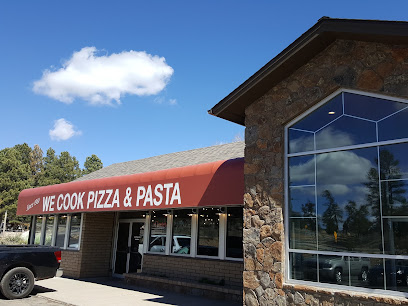
Big E Steakhouse & Saloon
Experience the best steak in Grand Canyon Village at Big E Steakhouse & Saloon – where delicious flavors meet stunning natural beauty.
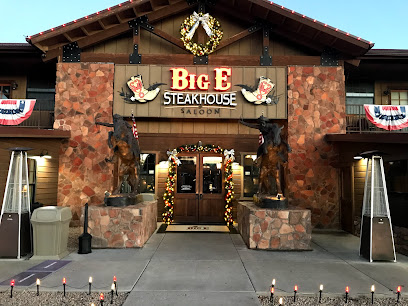
El Tovar Dining Room
Experience fine dining at El Tovar Dining Room amidst breathtaking views of the Grand Canyon - where culinary excellence meets historic charm.
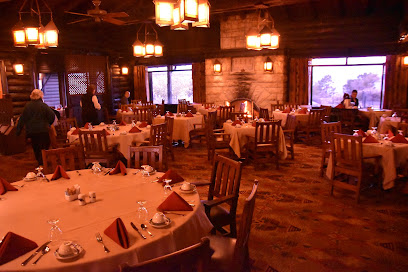
Yavapai Tavern
Discover delicious American cuisine amidst stunning views at Yavapai Tavern in Grand Canyon National Park.
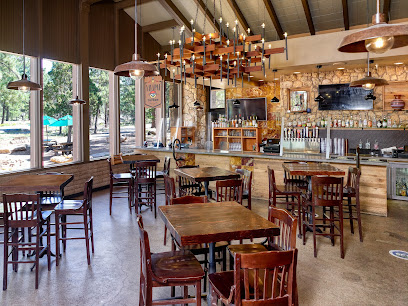
Foodie Club
Experience delightful dining at Foodie Club in Grand Canyon Village - where adventure meets flavor in every bite.
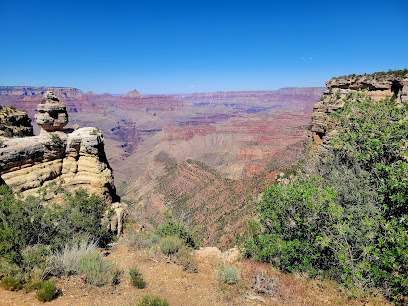
Arizona Steakhouse
Experience authentic American cuisine at Arizona Steakhouse in Grand Canyon Village, where every meal comes with breathtaking views.

Maswik Food Court
Discover delicious dining at Maswik Food Court in Grand Canyon National Park—where flavor meets convenience amidst stunning scenery.
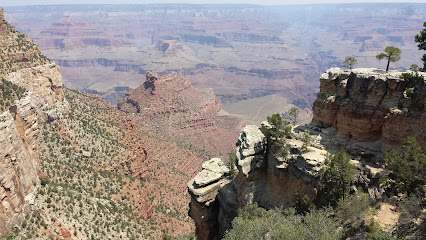
Harvey House Cafe
Experience delightful dining at Harvey House Cafe in Grand Canyon Village, where good food meets stunning natural beauty.
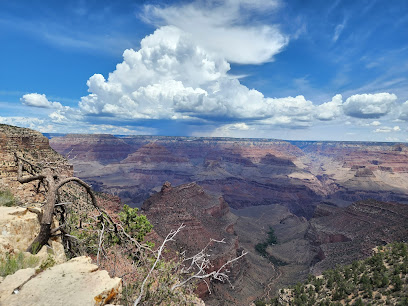
Canyon Star Steakhouse & Saloon
Experience mouth-watering steaks and warm hospitality at Canyon Star Steakhouse & Saloon near the Grand Canyon.
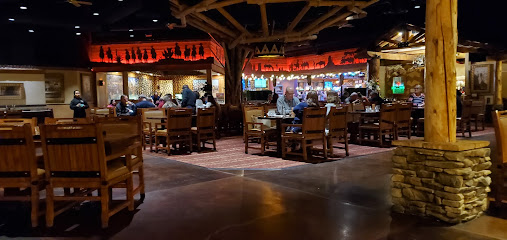
Desert Lounge + Grill
Experience authentic Southwestern American cuisine with stunning views at Desert Lounge + Grill in Grand Canyon Village.
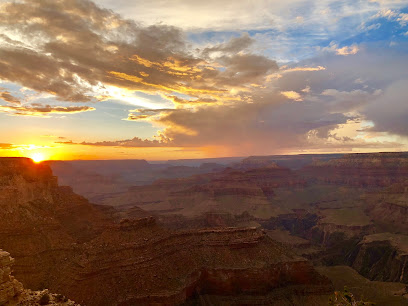
The Fountain
Experience delicious takeout at The Fountain in Grand Canyon Village, where breathtaking views meet delightful meals amidst nature's grandeur.

Markets, malls and hidden boutiques
Grand Canyon National Park
Explore the stunning vistas and rich history of Grand Canyon National Park, a must-visit national park in Arizona.

Grand Canyon Visitor Center
Discover the Grand Canyon Visitor Center, your essential starting point for exploring one of nature's greatest wonders with breathtaking views and rich history.
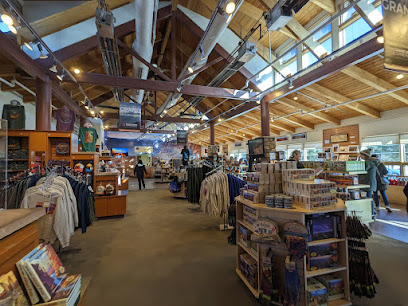
Grand Canyon West Skywalk
Discover breathtaking views at the Grand Canyon West Skywalk, a glass bridge offering stunning perspectives of one of nature's greatest wonders.
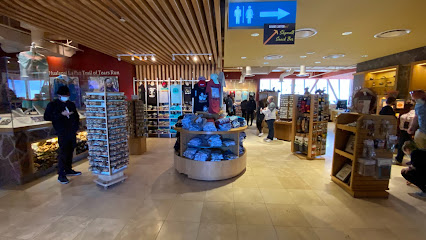
Mather Point
Experience the breathtaking views at Mather Point, the most visited vista in the Grand Canyon National Park, where nature's beauty knows no bounds.
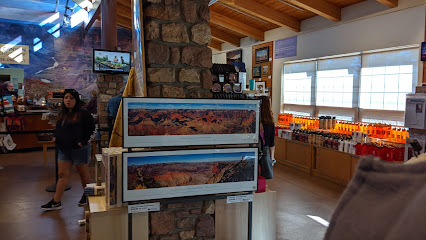
Grand Canyon Visitor Center IMAX
Experience the breathtaking beauty of the Grand Canyon at the Visitor Center IMAX, your gateway to adventure and exploration.
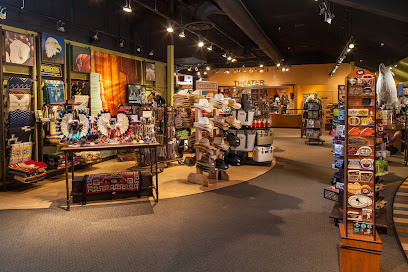
Grand Canyon Village Market & Deli
Discover convenience and local flavors at Grand Canyon Village Market & Deli, your essential stop for snacks, meals, and camping supplies in the Grand Canyon.
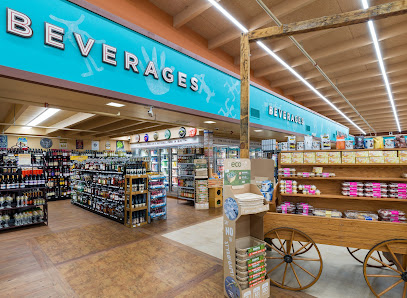
Yavapai Geology Museum
Explore the geological wonders of the Grand Canyon at the Yavapai Geology Museum, where history and nature intertwine beautifully.
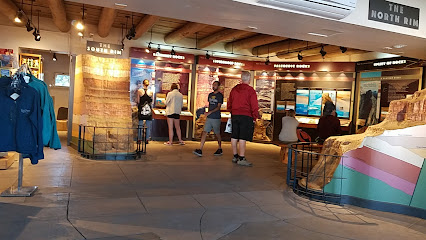
Bright Angel Bikes & Café at Grand Canyon Visitor Center
Discover the perfect blend of adventure and relaxation at Bright Angel Bikes & Café, your gateway to the Grand Canyon's stunning vistas.
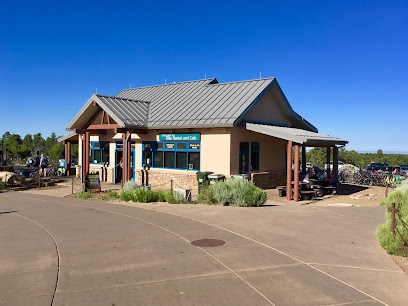
Tusayan General Store
Discover Tusayan General Store: Your one-stop shop for groceries, souvenirs, and essentials near the Grand Canyon.
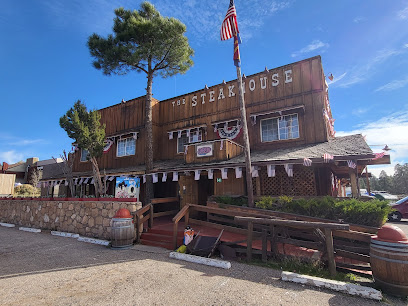
Starbucks
Experience the essence of coffee culture near the Grand Canyon, where adventure meets comfort in every cup.
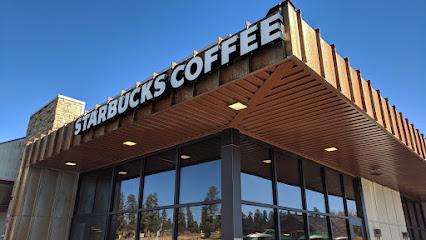
Route 66 Museum And Gift Shop
Discover the rich history and quirky charm of Route 66 at the Route 66 Museum and Gift Shop in Williams, Arizona, a perfect blend of nostalgia and shopping.
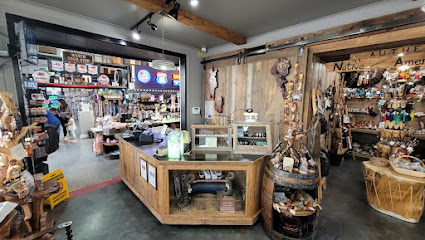
Grand Canyon National Park - Kolb Studio
Discover the artistic spirit of the Grand Canyon at Kolb Studio, where literature meets breathtaking views and creative inspiration abounds.
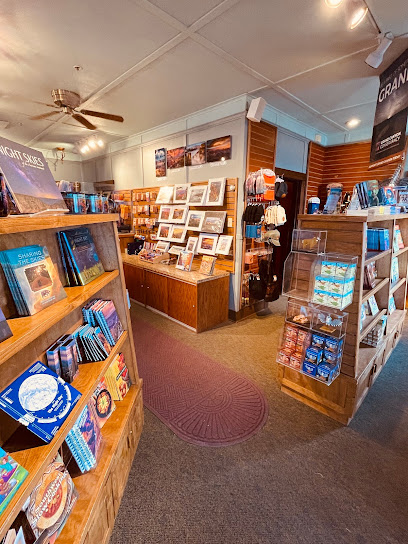
Hopi House
Discover the rich Native American heritage at Hopi House, a historic landmark offering unique arts and crafts amidst the stunning backdrop of the Grand Canyon.
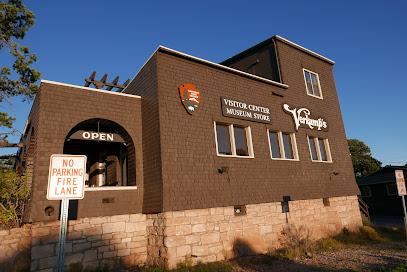
Grand Canyon Chocolate Factory
Experience the perfect blend of sweet indulgence and breathtaking views at the Grand Canyon Chocolate Factory, a delightful destination for chocolate lovers.
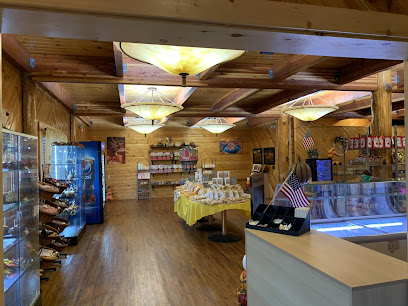
GCC Park Store at Grand Canyon Visitor Center
Shop for unique gifts, books, and souvenirs at GCC Park Store, the heart of Grand Canyon Visitor Center.
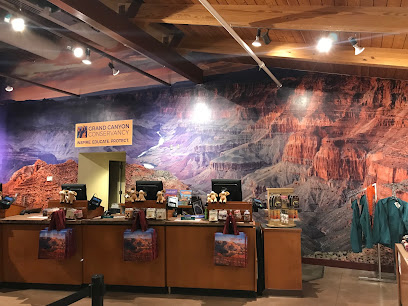
Essential bars & hidden hideouts
Grand Canyon Visitor Center
Discover the Grand Canyon Visitor Center, your essential starting point for exploring the majestic landscapes and rich history of this iconic national park.
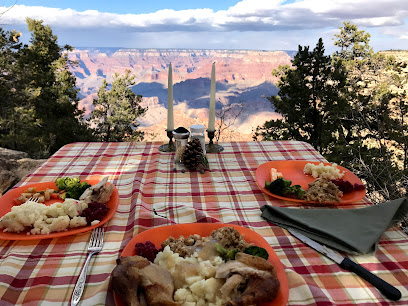
Pine Country Restaurant
Experience authentic American flavors at Pine Country Restaurant, the heart of Williams, AZ, known for its cozy atmosphere and delicious homemade pies.
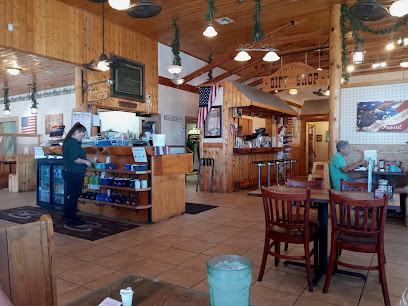
Squire Resort at the Grand Canyon, BW Signature Collection
Experience the ultimate comfort and adventure at Squire Resort, the perfect gateway to the breathtaking beauty of the Grand Canyon.
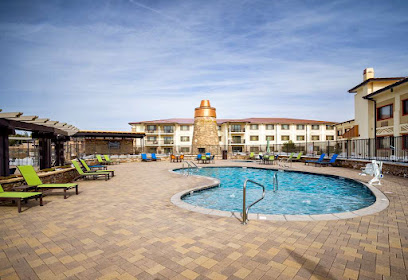
Cruiser's Route 66 Cafe
Discover the nostalgic charm and delicious American cuisine at Cruiser's Route 66 Cafe in Williams, Arizona, the perfect stop on your Route 66 adventure.
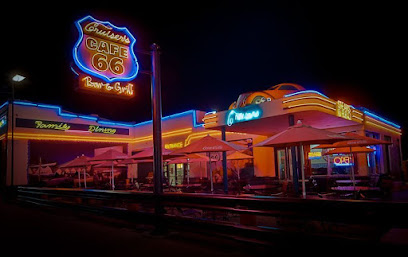
We Cook Pizza and Pasta
Savor authentic Italian cuisine with a delightful selection of pizzas and pastas near the stunning Grand Canyon.
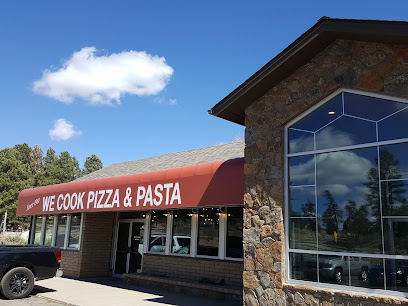
Big E Steakhouse & Saloon
Experience the essence of American cuisine with hearty steaks and a charming atmosphere at Big E Steakhouse & Saloon in Grand Canyon Village.
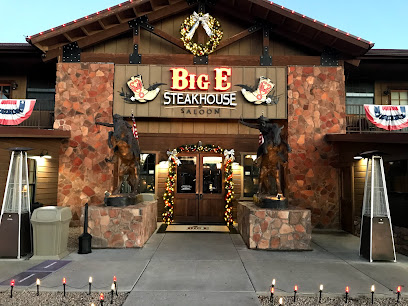
El Tovar Dining Room
Experience fine dining at El Tovar Dining Room, where exquisite cuisine meets the majestic views of the Grand Canyon.
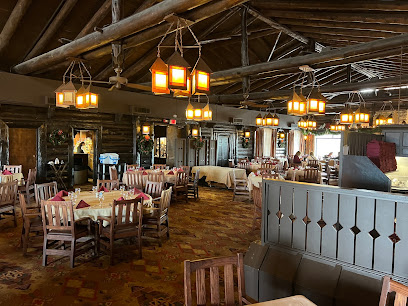
Yavapai Tavern
Experience the spirit of the Grand Canyon at Yavapai Tavern, where hearty meals, local brews, and camaraderie await you in a vibrant sports bar atmosphere.
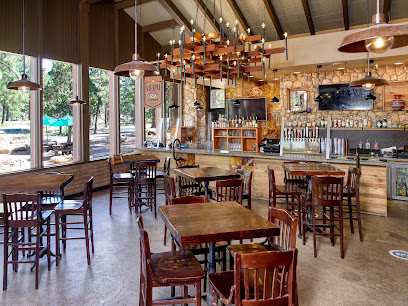
Wendy's
Enjoy delicious fast food at Wendy's in Tusayan, just minutes from the Grand Canyon - a perfect pit stop for hungry adventurers.

Bright Angel Bikes & Café at Grand Canyon Visitor Center
Savor delicious American cuisine and bike rentals at Bright Angel Bikes & Café, your gateway to Grand Canyon adventures.
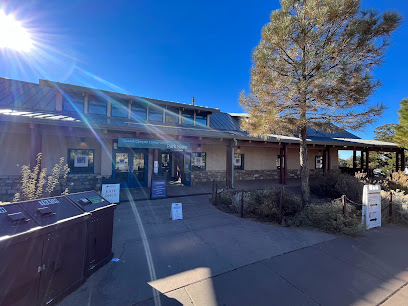
Foodie Club
Experience the perfect blend of breathtaking views and delicious cuisine at Foodie Club in Grand Canyon Village.
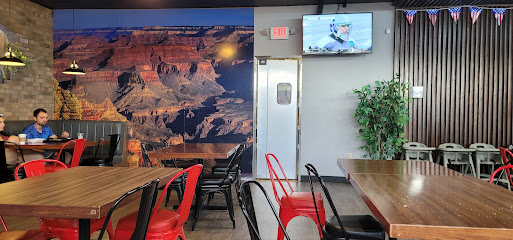
Arizona Steakhouse
Experience the best of American cuisine at Arizona Steakhouse, where delicious steak meets breathtaking views in the Grand Canyon.
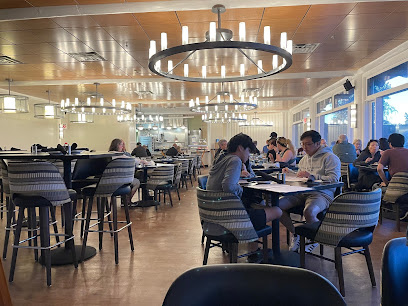
Grand Canyon Brewing + Distillery
Discover the essence of craft brewing at Grand Canyon Brewing + Distillery, a must-visit destination for food and beer lovers alike, in Williams, Arizona.
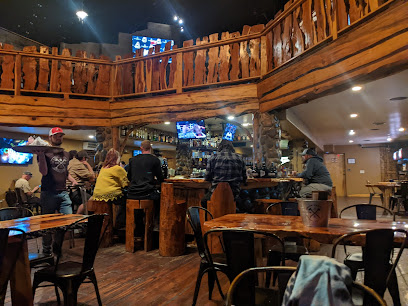
Maswik Food Court
Discover delicious dining at Maswik Food Court, a family-friendly food court nestled in the breathtaking Grand Canyon Village.
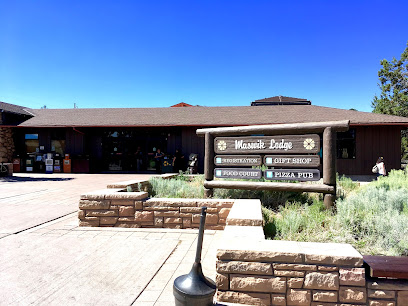
Harvey House Cafe
Savor classic American cuisine with stunning views at Harvey House Cafe in Grand Canyon Village.
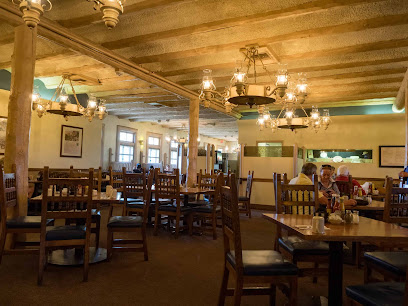
Local Phrases about Grand Canyon National Park
-
- HelloYa'at'eeh
[yah-ah-tay] - GoodbyeAhe'hee'
[ah-hay-hay] - YesAhe'
[ah-hay] - NoT'a'
[tah] - Please/You're welcomeHágoónee'
[ha-goo-nay] - Thank youAhéhee'
[ah-hay-hay] - Excuse me/SorryShí ma
[shee-mah] - How are you?K'é
[kay] - Fine. And you?Díí hózhǫ́. Áá'ą́
[dee-ho-zhohn. ah-ah-on] - Do you speak English?Bizaad at'ééd?
[bee-zaad ah-tay-ayd] - I don't understandT'áá hwó' ají t'éego
[tah-hwah a-hee tay-go]
- HelloYa'at'eeh
-
- I'd like to see the menu, pleaseTsídii łeehgo yilwoh, ahe'
[tsee-dee leeh-go yil-woah, ah-hay] - I don't eat meatNíts'áadóóshí dooleel
[neet-sah-doh-shee doo-leel] - Cheers!T'áá hwó' ají t'éego
[tah-hwah a-hee tay-go] - I would like to pay, pleaseK'éédę́ę́' łeehgo yilwoh, ahe'
[kay-day-nay-nay leeh-go yil-woah, ah-hay]
- I'd like to see the menu, pleaseTsídii łeehgo yilwoh, ahe'
-
- Help!Át'ééd
[ah-tay-ayd] - Go away!Yá'áh tééh
[yah-ah tay] - Call the Police!T'áá hwó' ají t'éego
[tah-hwah a-hee tay-go] - Call a doctor!T'áá hwó' ají t'éego
[tah-hwah a-hee tay-go] - I'm lostNíts'ííni
[neet-see-nee] - I'm illNíts'áadóóshí dooleel
[neet-sah-doh-shee doo-leel]
- Help!Át'ééd
-
- I'd like to buy...T'áá hwó' ají t'éego
[tah-hwah a-hee tay-go] - I'm just lookingT'áá hwó' ají t'éego
[tah-hwah a-hee tay-go] - How much is it?Háshii dííshní
[ha-shee dee-shnee] - That's too expensiveT'áá hwó' ají t'éego
[tah-hwah a-hee tay-go] - Can you lower the price?T'áá hwó' ají t'éego
[tah-hwah a-hee tay-go]
- I'd like to buy...T'áá hwó' ají t'éego
-
- What time is it?Háadis bík'is?
[haa-dees beek-eesh] - It's one o'clockNaakai t'áá haash
[nah-kai tah-haash] - Half past (10)Naakai t'áá haash
[nah-kai tah-haash] - MorningShí
[shee] - AfternoonAtsá
[at-sah] - EveningT'áá hwó'
[tah-hwah] - YesterdayYisdááh
[yis-dah] - TodayJiní
[jee-nee] - TomorrowBihí
[bee-hee] - 1T'áá
[tah-hwah] - 2Naakai
[nah-kai] - 3Táá
[tah-hwah] - 4Dįį'
[dee-ee] - 5Ashdla'
[ash-dlah] - 6Hastą́ą́
[has-tah-on] - 7Tseebíí
[tsee-bee] - 8Tązhii
[tahn-zhee] - 9T'ááłá'
[tah-hwah-lah] - 10Níłch'i
[neel-chee]
- What time is it?Háadis bík'is?
-
- Where's a/the...?Hózhǫ́ níshłį́?
[ho-zhohn neesh-lee] - What's the address?Bilasáana
[bee-lah-sah-nah] - Can you show me (on the map)?Díí shi
[dee-shee] - When's the next (bus)?Níłch'i
[neel-chee] - A ticket (to ....)Naakai
[nah-kai]
- Where's a/the...?Hózhǫ́ níshłį́?
History of Grand Canyon National Park
-
The Grand Canyon has been home to human inhabitants for thousands of years. Archaeological evidence suggests that the first humans arrived at the Grand Canyon around 12,000 years ago. These early inhabitants were hunter-gatherers who left behind tools, petroglyphs, and dwellings. The Ancestral Puebloans, also known as the Anasazi, built sophisticated cliff dwellings and granaries, leaving behind a rich legacy of artifacts and structures.
-
The Havasupai and Hualapai tribes have lived in and around the Grand Canyon for centuries. The Havasupai, known as the 'People of the Blue-Green Water,' have resided in the canyon for at least 800 years, cultivating crops and living in harmony with the land. The Hualapai, or 'People of the Tall Pines,' traditionally inhabited an area stretching from the Grand Canyon to the pine forests of the Hualapai Mountains. Both tribes maintain a deep spiritual connection to the land and continue to preserve their cultural heritage.
-
The first recorded European to view the Grand Canyon was García López de Cárdenas, a Spanish explorer, in 1540. Sent by Francisco Vázquez de Coronado, Cárdenas and his men were searching for the fabled Seven Cities of Gold. Their expedition marked the beginning of European interest in the region, although it would be centuries before the canyon was fully explored and mapped.
-
In 1869, John Wesley Powell, a one-armed Civil War veteran, led the first successful expedition to navigate the Colorado River through the Grand Canyon. Powell's daring journey provided the first detailed maps and scientific observations of the canyon. His accounts captivated the public and sparked a greater interest in the natural wonders of the American West.
-
The Grand Canyon was first designated as a forest reserve in 1893 and later gained National Monument status in 1908, thanks to President Theodore Roosevelt's advocacy for conservation. On February 26, 1919, President Woodrow Wilson signed the Grand Canyon National Park Act, officially establishing it as a national park. This designation helped to protect the canyon's unique geological features and cultural heritage for future generations.
-
Throughout the 20th century, Native American tribes, particularly the Havasupai, fought for the recognition of their rights and claims to land within the Grand Canyon. In 1975, the Grand Canyon National Park Enlargement Act was passed, returning 185,000 acres of land to the Havasupai Tribe. This was a significant victory for Native American rights and underscored the importance of protecting indigenous cultures and their historical ties to the land.
-
The Grand Canyon faces ongoing threats from development, tourism, and environmental changes. Modern conservation efforts focus on preserving the natural and cultural resources of the park. Organizations such as the Grand Canyon Trust and the National Park Service work tirelessly to protect the canyon's ecosystem, promote sustainable tourism, and engage in educational outreach to ensure that this natural wonder is preserved for future generations.
Grand Canyon National Park Essentials
-
Grand Canyon National Park is located in northern Arizona. The nearest major airport is Phoenix Sky Harbor International Airport (PHX), approximately 230 miles away. From Phoenix, you can rent a car or take a shuttle service to the park. Another option is to fly into Flagstaff Pulliam Airport (FLG), which is about 80 miles south of the park. The Grand Canyon Railway offers a scenic train ride from Williams, Arizona, to the South Rim of the Grand Canyon.
-
Within Grand Canyon National Park, the most convenient way to get around is by using the park's shuttle bus system, which operates on the South Rim and is free of charge. The shuttle buses run on several routes and stop at popular viewpoints, lodges, and visitor centers. For those visiting the North Rim, personal vehicles are the primary mode of transportation, as shuttle services are limited. Bicycles are also available for rent at the South Rim.
-
The official currency in the United States is the US Dollar (USD). Credit and debit cards are widely accepted throughout the park, including at lodges, restaurants, and gift shops. ATMs are available at various locations on the South Rim, including the Market Plaza and the Grand Canyon Village. It is advisable to carry some cash for small purchases and tips.
-
Grand Canyon National Park is generally safe for tourists, but it is important to take standard precautions. Avoid hiking alone and always stay on designated trails. Be aware of your surroundings, especially near the edge of the canyon, as there have been accidents involving falls. Petty crime, such as theft from vehicles, can occur, so do not leave valuables unattended. The South Rim can get crowded, so keep an eye on your belongings in busy areas.
-
In case of emergency, dial 911 for immediate assistance. The park has its own medical clinic, the Grand Canyon Clinic, located on the South Rim. Visitors should carry sufficient water, as dehydration is a common issue. It's recommended to have travel insurance that covers medical emergencies. Park rangers are available to assist with minor injuries and to provide information on safety.
-
Fashion: Do wear comfortable, weather-appropriate clothing and sturdy hiking shoes. Don't wear flip-flops or high heels on trails. Religion: There are no specific religious customs to observe, but do show respect at the park's cultural sites. Public Transport: Do use the park's shuttle buses to reduce traffic congestion. Don't litter on the buses or trails. Greetings: Do greet fellow hikers and park staff with a friendly hello. Eating & Drinking: Do bring plenty of water and snacks for hikes. Don't feed the wildlife, as it can harm them and is against park regulations.
-
To experience Grand Canyon National Park like a local, consider visiting during the shoulder seasons (spring and fall) when the weather is pleasant and crowds are smaller. Take a sunrise or sunset hike for breathtaking views and fewer people on the trails. Visit less crowded viewpoints such as Lipan Point or Shoshone Point. Engage with park rangers and attend ranger-led programs for in-depth knowledge about the park's geology, flora, and fauna.
Trending Landmarks in Grand Canyon National Park
Nearby Cities to Grand Canyon National Park
-
Things To Do in Kanab
-
Things To Do in Page
-
Things To Do in Mt Carmel
-
Things To Do in Springdale
-
Things To Do in Flagstaff
-
Things To Do in St. George
-
Things To Do in Bryce Canyon City
-
Things To Do in Mesquite
-
Things To Do in Sedona
-
Things To Do in Cedar City
-
Things To Do in Panguitch
-
Things To Do in Escalante
-
Things To Do in Prescott
-
Things To Do in Kingman
-
Things To Do in Winslow

